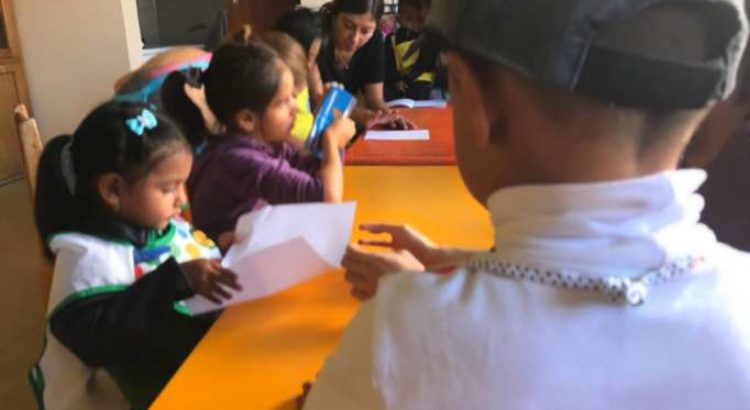How big pharma can impact the education of med school students
Some students are worried drug literature is too prominent in medical studies
This is the third story in a four-part series about the pharmaceutical industry and the hold it has on Canada’s health-care system — swaying doctors’ opinions, funding medical schools and, ultimately, affecting the type of drugs we are prescribed. To read Part 1, click here. To read Part 2, click here.
When Dr. Elia Abi-Jaoude was a medical student at the University of Manitoba in the early 2000s, he found out drug companies were donating textbooks — and he wasn’t pleased.
His main textbook for gastroenterology, First Principles of Gastroenterology, was published by pharmaceutical company AstraZeneca. AstraZeneca makes drugs for conditions like asthma, blood pressure and cancer.
Along with another classmate, Abi-Jaoude started a petition against the pharma-funded material and began questioning if the industry was too involved in educating future doctors. He was concerned that companies with a conflict of financial interest were helping inform what students learned.
Today, Abi-Jaoude is a psychiatrist at the Hospital for Sick Children in Toronto. He still wonders about some of the things he was taught in med school.
“The truth is, it’s hard to disentangle medical education from whatever the prevailing culture is in medicine, including ways of thinking or beliefs of the day about diagnosis or treatment,” he says.
“And currently, the pharmaceutical and medical device industries continue to have much influence over the shaping of such beliefs.”
There is no greater recent example of how the pharmaceutical industry may affect the practice of medicine than the opioid crisis.
Thousands of Canadians have lost their lives to the opioid epidemic, and more continue to struggle with addiction. Many were prescribed the painkillers by their doctors, who say pharmaceutical companies intentionally lied to them about the safety of opioids. The crisis has highlighted the power of drug manufacturers when it comes to swaying physicians’ prescribing habits and what doctors learn about drugs. But that exposure to big pharma starts much earlier on with drug companies pouring millions of dollars into medical schools.
Med school shapes how doctors approach medicine
Students go into med school relatively ignorant of medical culture and are expected to come out as health authorities, writes emergency room physician Dr. Joel Lexchin in his book Doctors in Denial: Why Big Pharma and the Canadian Medical Profession Are Too Close For Comfort.
“How they are taught, what kind of exposure they have to the pharmaceutical industry and how they see their teachers and those above them on the medical hierarchy relating to the industry will, in large part, determine their own relationship once they are independent doctors,” Lexchin wrote.
Lexchin, who is also a professor of health policy at York University, told Global News that when a drug company establishes a relationship with a med school, it is acting in its own best interest. These interactions are often in the form of research funding, grants or philanthropic donations. Drug companies also often have close relationships with faculty, too, paying educators to sit on advisory boards, for example.
“They [drug companies] make contact early on with medical students when these students are at an impressionable time in terms of their professional life — it’s just starting,” Lexchin says.
“The pharmaceutical companies want to establish a positive relationship with these medical students that can then go forward.”
If med students learn that industry interaction is the norm, they are more likely to meet with drug reps in their practice. Interacting with drug reps is known to affect doctors’ prescribing habits and can even lead to “irrational prescribing” of a brand’s drug, research shows.
Plus, Lexchin says pharma companies also like to give money to med schools because it builds relationships with faculty. Faculty are often very influential in the Canadian medical landscape, and when issues around pharmaceutical policy arise, big pharma benefits from having reputable doctors on its side.
Dr. Nav Persaud experienced this first-hand. While a second-year med student at the University of Toronto (U of T) in 2004, Persaud was one of the thousands who sat through a one-week compulsory course on pain management.
While he didn’t know it at the time, the course was funded by drug companies, including Purdue Pharma, the manufacturer of OxyContin. The course’s reference book was sponsored by Purdue Pharma, too, and described oxycodone as a weak opioid (it is 1.5times stronger than morphine).
What’s more, the co-author of the pain book, Dr. Roman Jovey, was also helping teach the course. Jovey worked as a consultant for Purdue, among other drug companies.
Persaud, who is now a physician at St. Michael’s Hospital, didn’t realize that what he had learned about pain and opioids was possibly biased until a few years out of school. While working with a med student, Persaud saw the future doctor’s lecture notes and realized the information he received on opioids was inaccurate.
“I then started thinking back to what I was taught and eventually realized that I was taught the same incorrect information,” Persaud told Global News.
Jovey previously told Global News that he doesn’t believe the information he wrote on opiates was influenced by his relationship with Purdue. Jovey added that he taught the students for free.
He said that one controversial section of the reference book was a paragraph that said taking a medication that’s released slowly (like oxycodone) has less addictive potential than taking a short-acting drug. He acknowledges that if the drug is abused — crushed, snorted or injected — then the slow release property is eliminated.
“And who would have thought that when it came out in 1996, that people would be crushing and snorting and injecting medications? I certainly didn’t,” Jovey said in 2013.
“I had total control over what the content was … That book was written based on how I practised, and it was based on the best knowledge that we had available at the time.”
Persaud filed a complaint, and the university discontinued the program in 2010. In 2013, almost 1,400 former U of T medical students were contacted by the school and told to disregard the teaching materials they were given regarding the prescription painkiller oxycodone.
Still, the effects of opioid promotion are felt in Canada.
“Thousands of people in Canada die opioid-related deaths each year,” Persaud says. “The death rate increased dramatically since the 1990s at the same time as prescribing increased.”
How much money are med schools getting?
U of T no longer gives students industry-funded pain books, but it still has financial ties to drug companies.
U of T has received millions of dollars from pharmaceutical companies, like Apotex Inc. and GlaxoSmithKline Inc., for research projects. Global News filed a freedom-of-information (FOI) request with the university to see what companies donated to the university and when.
Our original request was narrowed down to capture only research agreements between 1994 and 2020. This means that if pharmaceutical companies like Purdue Pharma, for example, made donations outside of research purposes, it is not included in this data.
The obtained financial information helps form an understanding of the role pharma companies play in med schools. While only a partial picture, the data shows financial support was given for projects and to individual faculty members.
Between 1995 and 2004, Apotex Inc. gave U of T $2,875,077 for research projects. GlaxoSmithKline Inc. (GSK) put $4,566,930 towards research at the university from 1994 to 2020. This money included fellowships for three individual researchers, two of whom run labs.
From 2014 to 2019, Janssen Inc. donated $1,642,998 for research. Allergan Inc. gave $272,696.85 between 2000 and 2003. Bristol-Myers Squibb Pharmaceutical gave an infectious diseases physician $180,000 between 2002 and 2005 and another doctor a two-year fellowship of $119,930 in 2001.
In a statement to Global News, Dr. Richard Hegele, vice-dean of research and innovation of U of T’s Faculty of Medicine, said academic research is supported by funding from government agencies, individual donors, foundations and the private sector.
“The University of Toronto has long-standing policies and practices — including the ethical conduct of research, research partnerships, the publications policy, the conflict-of-interest policy and the statement on advisory bodies — that ensure the highest standard of integrity in our research practices,” he said.
Dr. Patricia Houston, vice-dean of U of T’s MD program, said in a statement: “Funds that support the operation of the MD program are provided through a combination of government grants and tuition revenue. We do not receive funds from the pharmaceutical industry to deliver on the educational mission of the MD program.”
The University of Montreal received $474,463 from pharmaceutical companies between 2017 and 2018 for various health science projects, a spokesperson for the school told Global News.
Queen’s University told Global News that its “records indicated that the total for all philanthropic gifts, grants and sponsorships received by Queen’s and its faculties from pharmaceutical companies in (calendar year) 2018 was $695,600.”
The Faculty of Medicine and Health Sciences (FMSS) at the Université de Sherbrooke (UdeS) says it collects research revenue data yearly “for the purposes of annual reporting to the Association of Faculties of Medicine of Canada (AFMC).” This money is recorded as private sector donations as a whole, and funding from pharma companies is not separated.
“This is why we do not have precise data on the funding provided specifically by pharmas,” a spokesperson told Global News. “We are, however, happy to share this data with you: at the FMSS, private sector funding fluctuated between $4.8 and $5.9 million per year since 2012.”
In Lexchin’s book Doctors in Denial, he highlights the generous donations made from industry to med schools.
In 2013, McGill University’s Faculty of Medicine received $4 million from pharma company Merck. In a press release from the time, the dean of the med school said the faculty is “tremendously proud to be partnering with Merck Research Laboratories to bring the benefits of our work to society more swiftly.”
Pharmaceutical company Amgen Canada says it invests approximately $70 million into research and development in Canada on an annual basis, according to a press release. The company says it provides sponsorship and funding to programs at U of T Mississauga and the University of British Columbia (UBC).
In a statement to Global News, GSK said it is “proud to collaborate with some of the world’s top researchers here in Canada.”
The pharma company said: “Our funding of research projects, such as investigator-sponsored studies and past professorships at Canadian medical schools, are intended to encourage health science research, foster innovation and improve disease state understanding in areas of mutual interest and where there is a patient need. We take an arm’s-length approach to these initiatives, as the health science research is conducted independent of GSK.”
How does pharma money affect med schools and health care?
Lexchin says that even if funding for research seems charitable, drug companies often benefit.
While faculty and lab assistants are often the ones involved in research projects, this still affects which health issues receive attention. Research also shows that industry-funded studies are more likely to produce favourable results than trials supported by other sources of funding.
“They want the faculty to do research, and even if that research is done without any ethical issues, the pharmaceutical companies are still promoting research in particular areas with, possibly, a particular slant in them,” Lexchin says.
Lexchin gives an example: if a pharmaceutical company is interested in developing a product to treat sexually transmitted infections (STIs), it may give a university money to research STI antibiotics. The company wouldn’t put money toward researching the sexual practices of young teenagers, on the other hand. Those findings wouldn’t sell STI treatment drugs.
“The pharmaceutical industry level of resources means that other voices and other kinds of research may be drowned out,” Lexchin adds.
Lexchin also says there are reasons to be concerned about the relationship faculty members have with the industry. A school’s disclosure policies will aim to mitigate bias, but if a student is learning from a professor whose research is funded by a certain pharma company, it sends a message that these relationships are OK.
“If Dr. X, who is world-famous as a cardiologist, has a relationship with Merck, that puts relationships with drug companies in a positive light,” Lexchin explains.
Likewise, if professors are paid by a drug company to give presentations at conferences or events, their stance on industry influence may be skewed. Lexchin says this is called “the gift relationship” and it often happens on a subconscious level.
“So you’ve got something from a drug company, whether it’s research funding or you’re on the advisory board for the company, and you feel an obligation to repay that gift,” he says.
“One of the ways you can repay it is by putting industry-physician relationships in a positive light. There are always controversies around how well drugs work or whether or not people should disclose their conflicts of interest. And if you’ve got a relationship with a drug company, you’re more likely to be on one side of that issue than the other.”
What do med schools say?
Medical schools across Canada have policies intended to combat possible conflicts of interest and industry bias.
Global News reached out to each medical school and received information on their policies. These policies vary from school to school, but all accept financial donations from the pharma industry or otherwise. Med schools also have their own policies on faculty disclosing industry relationships and possible conflicts of interests, but all encourage transparency.
If you want to read each medical school’s response, you can do so here.
- U of T’s Faculty of Medicine and its faculty members “have many valuable relationships with private-sector entities. These relationships encourage and support innovation and accelerate delivery of new health-care products and methods to our patients,” the university’s policies state. Faculty are still expected to disclose conflicts of interest, and the institution has policies around faculty receiving industry funding or gifts.
- McMaster University says: “All faculty members holding academic appointments at McMaster University have an obligation to act with integrity in all research and education relationships and to avoid situations that place personal interest above interests that would be consistent with optimal academic integrity.”
- UBC says it “is committed to upholding academic integrity and professionalism across the educational and research spectrum.” Faculty are expected to disclose possible conflicts of interest as well as actual conflicts of interest.
- UBC also offers faculty a course on industry interaction that “covers key issues in the relationships between the medical community and industry.”
- At Western University’s Schulich School of Medicine and Dentistry, “a full-time clinical academic may engage in part-time professional activities, paid or unpaid, provided that such activities do not constitute a conflict of commitment or interfere with the member’s responsibilities to the university.” They are also subject to conflict-of-interest conditions.
- Since 2017, the University of Montreal says it has offered “online ethics training” for members of the medical faculty who deal with the pharma industry. “More than 250 people followed the training last year,” a spokesperson for the university said. The university also has policies around disclosing conflicts of interest.
What do med students think?
Mei Wen started med school at U of T in 2015 and says the opioid epidemic has made students like her highly skeptical of industry interaction. The recent lawsuits against drug manufacturers for their alleged involvement in fuelling the crisis hasn’t helped, either.
During her education, Wen says she heard of past conflict-of-interest issues at the university, like the Purdue-funded pain book. She believes things have changed for the better since then and feels there’s more transparency around industry interaction.
For example, the 27-year-old says that when anyone got in front of her class to present information or lead a discussion, they were expected to disclose any industry ties. This means that if a professor sat on an advisory board for a drug company, he or she was responsible for letting students know. These disclosures affected how Wen interpreted information.
WATCH: How pharmaceutical reps lobby doctors to use their drugs
“It kind of raised a flag in my head to pay a little more attention and [view] the information more critically,” Wen says.
While Wen says she wasn’t offered a full course on how to navigate relationships with the pharma industry or how to spot bias in research, those topics did come up. Being taught by professors who are critical of industry influence, like Dr. David Juurlink, helped shape her skepticism, too.
Now in a residency program in Vancouver, Wen says she won’t meet with drug reps at work.
“Because of the nature of my training, … [I’m] wary when a pharmaceutical drug rep is advertising a certain medication,” she says.
Cut off the funding?
Medical schools argue that donations and research funding help promote quality education. As long as faculty disclose any possible conflicts of interest and industry money doesn’t affect the quality of education, there’s no reason to turn away dollars.
But Lexchin is less idealistic. He says drug companies should not play a role in shaping what and how future doctors learn, and medical schools are environments ripe for influence. Medical information needs to be unbiased and supported by evidence, not pharma money.
Lexchin acknowledges that industry money can help set up labs or allow schools to hire renowned experts. But these are short-term gains, he says, and there are tradeoffs when you work with industry.
“They [med schools] don’t look at the long-term possible problems associated with that kind of interaction, which are research being focused in a particular direction and having more [doctors] willing to interact with industry,” he says.
The more doctors interact with industry, the less appropriate their prescribing behaviour becomes, Lexchin adds, saying: “Medical schools don’t take those kinds of issues into account.”
Abi-Jaoude agrees. Although his petition against free textbooks was well over 10 years ago, his stance on industry interaction is the same: there’s no reason for drug companies to be educating future physicians. It doesn’t benefit students; it only benefits sales.
Persaud’s fight for unbiased educational materials has also shaped the way he practises now as a doctor. Part of his job is to teach medical students and residents, and he does that without the help of big pharma.
“There’s obviously no need to have [drug] literature interpreted or spoon-fed to you by the pharmaceutical industry that has a clear vested interest,” he says.
— With files from Leslie Young
Laura.Hensley@globalnews.ca
Fuente de la Información: https://www.newmarkettoday.ca/local-news/canada-how-big-pharma-can-impact-the-education-of-med-school-students-1634906











 Users Today : 78
Users Today : 78 Total Users : 35459544
Total Users : 35459544 Views Today : 118
Views Today : 118 Total views : 3417876
Total views : 3417876